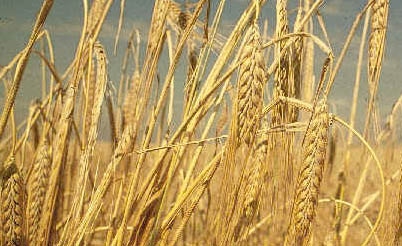
Barley has been cultivated for thousands of years, yet it doesn’t always make the list when energy experts discuss potential biofuel crops.Bio-oil—a liquid fuel generated when heat breaks down plant matter—is still a low-profile energy alternative.Research by Agricultural Research Service scientists could give a big boost to producing bio-oil from barley feedstocks.
November 29, 2010

Barley has been cultivated for thousands of years, yet it doesn’t always make the list when energy experts discuss potential biofuel crops. And bio-oil—a liquid fuel generated when heat breaks down plant matter—is still a low-profile energy alternative. But research by Agricultural Research Service scientists at the Eastern Regional Research Center (ERRC) in Wyndmoor, Pa., could give a big boost to producing bio-oil from barley feedstocks.
As a renewable transportation fuel, bio-oil made from barley byproducts—or any other biofeedstock—has several advantages. The fuel can potentially be refined, stored, and distributed with the infrastructure already in place for the petroleum fuel industry. And perhaps in the future, consumers will be able to fill up their cars with gasoline or diesel derived from bio-oil without needing special adaptations in their fuel systems.
ERRC lead scientist and chemical engineer Akwasi Boateng worked with chemist Charles Mullen, mechanical engineer Neil Goldberg, chemist Robert Moreau, and research leader Kevin Hicks on studies that evaluated the yields of bio-oil from barley straw, hulls, and dried distillers grains (DDGS). All three feedstocks are byproducts of fermentation of barley grain for ethanol—a biofuel option that is slowly gaining ground in the Middle Atlantic States and the Southeast, where farmers could cash in on the production of winter barley cover crops while continuing to raise corn and other food crops in the summer.
The researchers produced bio-oil from all three barley byproducts via “fast pyrolysis,” an intense burst of heat delivered in the absence of oxygen. In the lab, a kilogram of barley straw and hulls yielded about half a kilogram of bio-oil with an energy content about half that of No. 2 fuel oil.
The energy content of bio-oil from barley DDGS—including DDGS contaminated with mycotoxins, which can’t be used to supplement livestock feed—was even higher, about two-thirds that of No. 2 diesel fuel oil. But it was more viscous and had a shorter shelf life than the bio-oils produced from straw or hulls.
The fast-pyrolysis process also creates a solid byproduct called “biochar,” which might improve the water-holding capacity and nutrient content of soils. Amending soils with biochar can sequester carbon in the soil for thousands of years.
Based on these studies, the scientists suggest that colocating fast-pyrolysis units in commercial barley grain ethanol plants could be a win-win proposition for farmers in the Middle Atlantic States. Barley grain could be used to produce ethanol, and the byproducts could be used to produce bio-oil either for transportation fuels or for producing heat and power needed for the grain-to-ethanol conversion.
Growing winter barley would also help reduce soil erosion and nitrogen leaching, both major concerns for farmers in the Chesapeake Bay Watershed. Adding biochar as a soil amendment could further benefit food crop production and carbon sequestration efforts—all of which shows that even venerable old crops can be used to help solve current energy challenges.
You May Also Like



